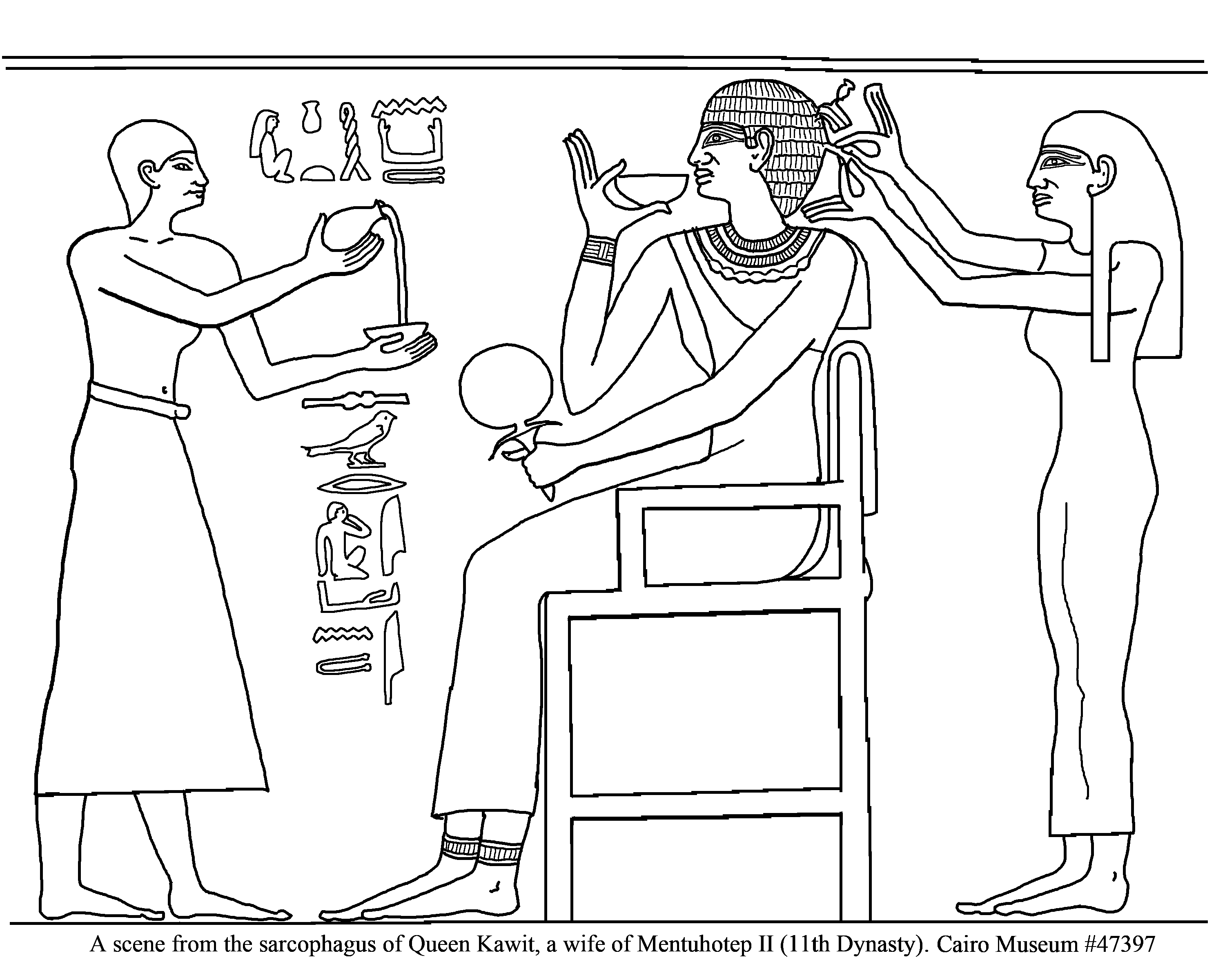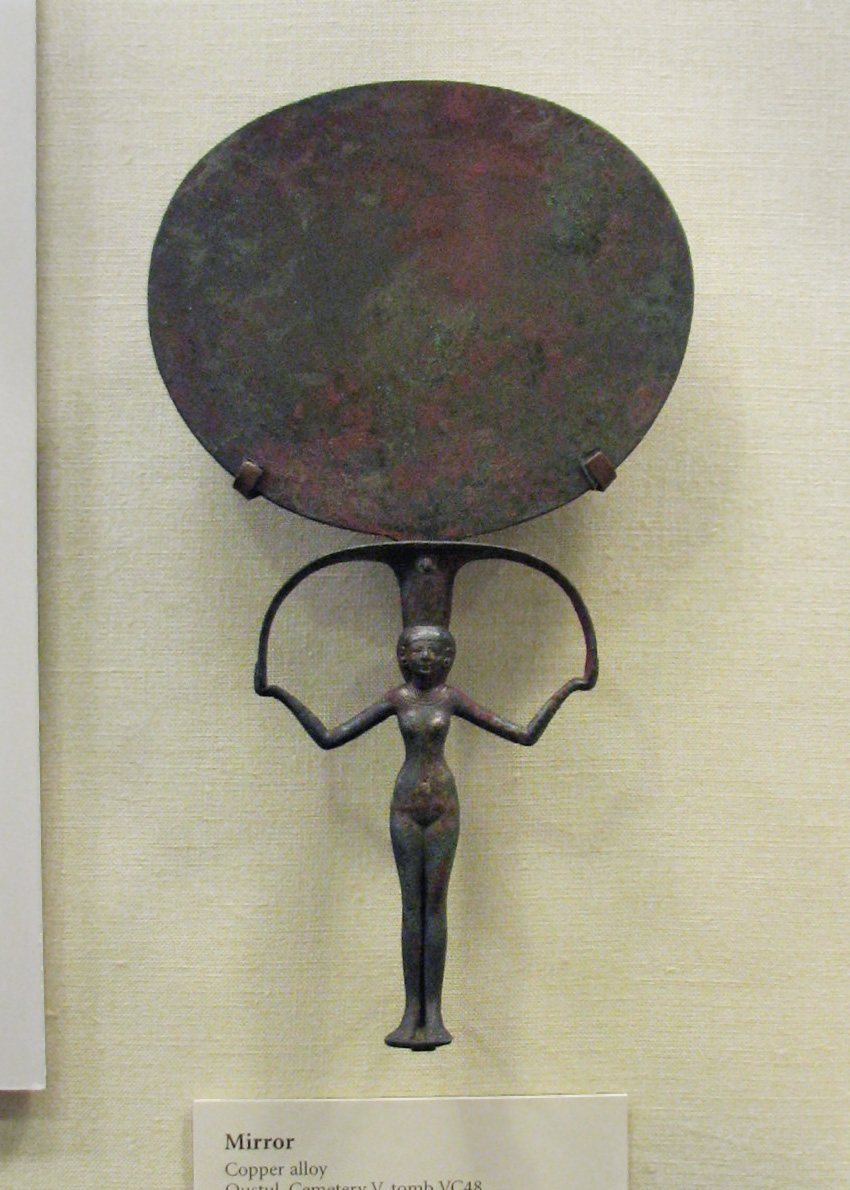
Qustul, Cemetery V, tomb VC48
New Kingdom, reign of Amunhotep III (1390-1352 BCE)
OIM 21694
Photo ©Joan Ann Lansberry, 2010
 Qustul, Cemetery V, tomb VC48 New Kingdom, reign of Amunhotep III (1390-1352 BCE) OIM 21694 Photo ©Joan Ann Lansberry, 2010
|
|
(From _New Kingdom Remains from Cemeteries R, V, S, and W at Qustul and Cemetery K at Adindan_, by Bruce Beyer Williams, pages 98-99) This mirror has "been called 'perhaps the most graceful object ever to come out of Nubia.'", which may be exaggerated, but certainly it is elegant. The nude woman is "holding a papyrus umbel on her head and supporting it with her hands. By analogy with many other mirrors that show only the goddess' face, this female figure should be identified as Hathor." "Apart from the uniquely high quality of the mirror from Qustul, it shares most of the features of pose and attribute with other feminiform mirrors. However, no two of them appear to be alike, and they must have been cast by the lost-wax process as individual works." Next is another example of these mirrors: |
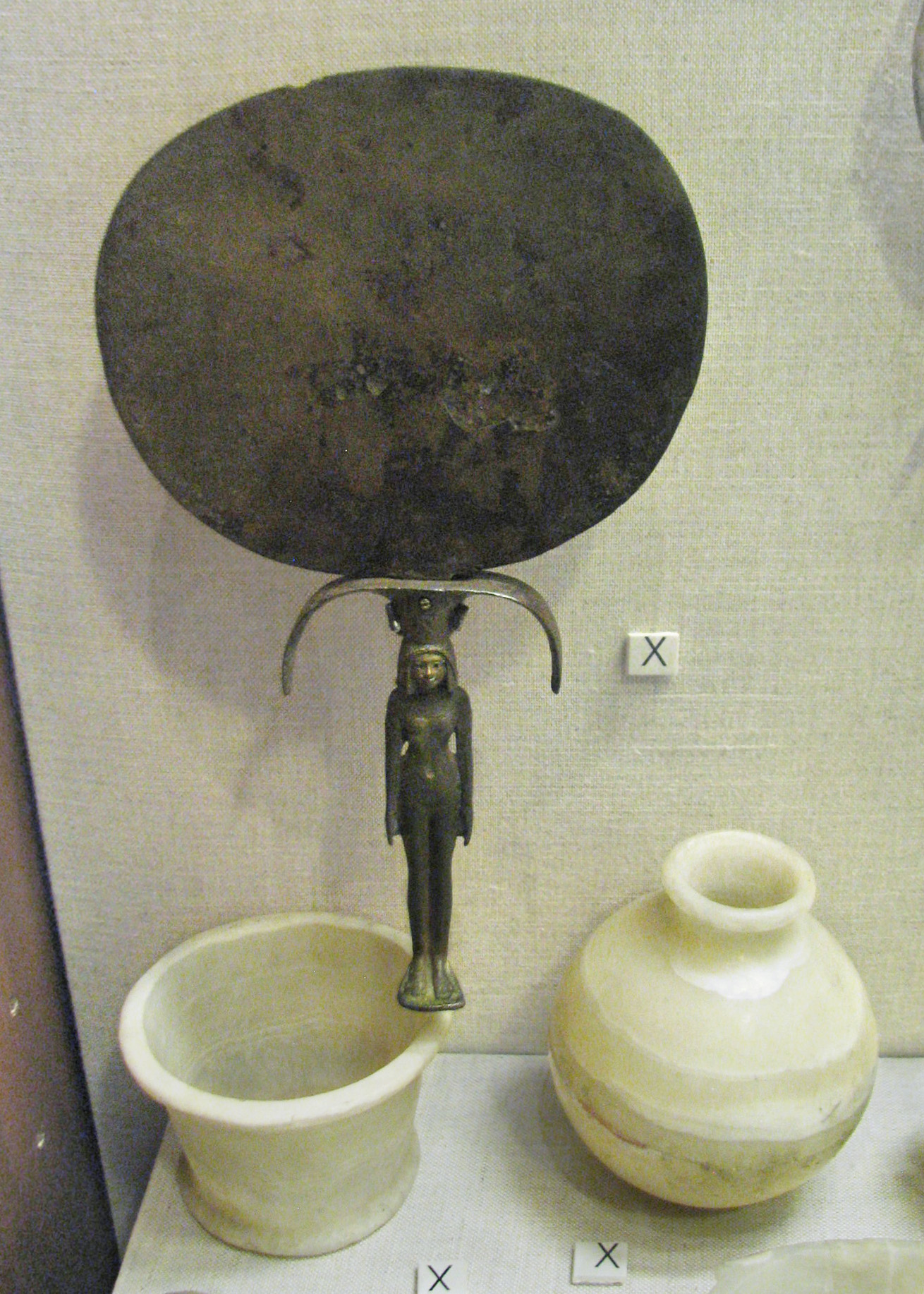 OIM 11370 - Mirror - Bronze - 225hx131wx18th mm Oval, Handle In Form Of Nude Female Figure W Papyrus Leaves Above Head From this list? No info available for the two alabaster dishes Photo ©Joan Ann Lansberry, 2010
|
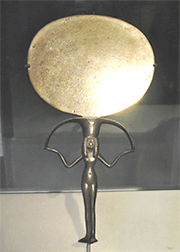 The Brooklyn museum also has an example |
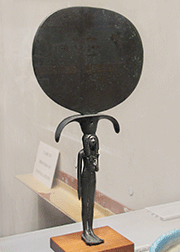 As does the Met museum... |
|
The lady in the Met Museum's example, in addition to the papyrus umbel serving as a crown, is also holding a papyrus. Why do all these mirrors have this symbol?
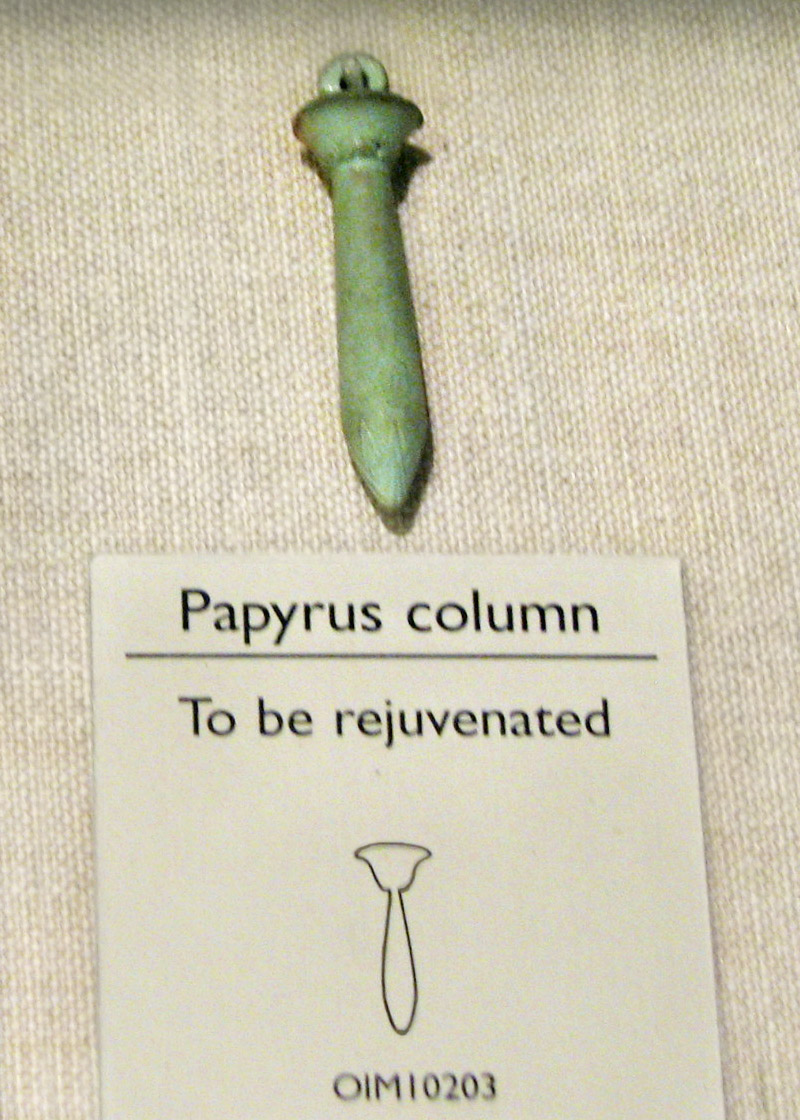 OIM 10203 Photo ©Joan Ann Lansberry, 2010 Those using the mirrors hope for youthful rejuvenation, and may have hoped the use of this symbol would aid in achieving it. Perhaps there is youthful symbolism in the shape of the mirror itself, as well:
"The disc of the mirror is a visual metaphor for the sun, shown in the New
Kingdom as a horizonatally elongated ovaloid - the rising sun rather than the
circular disc of noon."
The circular disc of noon could represent the peak of adulthood and the setting sun old age. But the rising sun has the day ahead of it.
|
